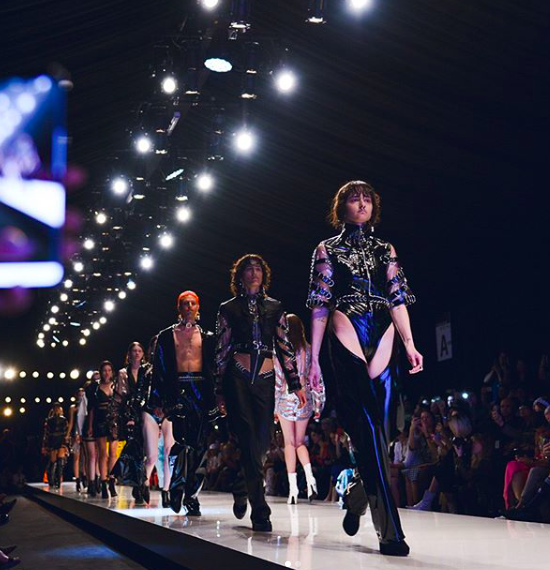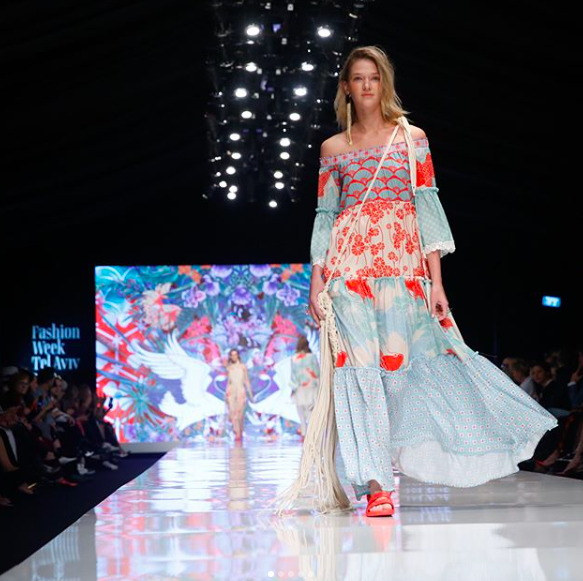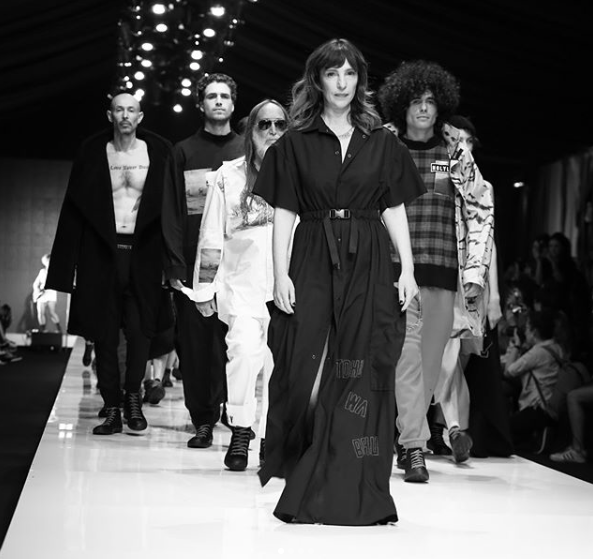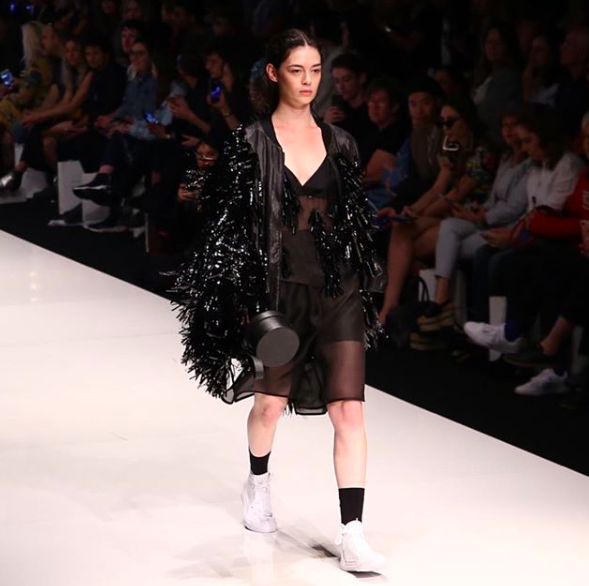Tel Aviv Fashion Week: Lost in Translation
By Chava Kuchar
Tel Aviv fashion week, recently held at the refurbished train station Hatachana, was a celebration of fashion, Israeli talent, diversity and paradoxes. I will speak both generally and briefly- for a more detailed coverage visit our 3 part diary.
To begin let’s talk about what was done well. The production level was high. This year, Motty Reif, producer of this event, chose not to take an umbrella sponsor, like Gindi or Mercedes Benz. Together, he and his team managed to produce the show themselves with a much tighter budget than in the past. Despite this, the event was professional; it ran on time and was of a very high calibre. You could see and feel Motty and his teams' presence in every aspect of the event - from the macro to the micro.
The event started off with Alon Livne's show, one of Israel’s most successful fashion exports. It was an unexpected march of 90’s inspired punk couture in PVC and metal. Next, Lara Rosnovsky’s relaxed tailoring took us to Spring/ Summer and then Holyland Civilian’s presented us with an Autumn/Winter collection. Are you confused? Because I was.
This is how we travelled through the rest of the shows, not certain what journey we were on or what was coming next. Were we celebrating fashion week with the rest of the international market or were we celebrating fashion on our own calendar? To be clear, the international shows were just showing Autumn/ Winter 2018 collections. Yes, they are 6 months ahead. There are many reasons for this; the most important of which is the timeline needed for buyers to see, order and designer’s to manufacture and stock the items by Autumn/ Winter 2018. I felt exasperated at this point, did we really expect that buyers would buy items from a Spring/ Summer collection when their budget was restricted for Autumn/ Winter?
One tent, one runway, one video. Each of the 18 shows began with a single video. It addressed the fashion industry’s responsibility in shaping the women of the next generation. A series of women, who are now all very successful in their own right, spoke about how they were seen and sidelined as children. They urged girls to believe in themselves, their rights and their dreams. It was an important message and for this reason alone it should have been played with English subtitles because there were 45 international writers, bloggers, photographers and buyers and none of them understood the most meaningful and important aspects of the event, such as this video. This was a huge oversight and completely wasted any chance of being reported to a foreign audience. With a screen behind you, why not present the content of the speeches in English?
Generally, the atmosphere was cheerful and positive, the audience was varied, I mean really varied, it ranged from 0-90 years of age. I have never been to a fashion show where there is a line of Bugaboo strollers parked outside. Everyone knew each other, it was tragically myopic in that sense, one octogenarian told me that if I want to get anywhere in Tel Aviv “you need to know someone” and a visiting photographer shook his head in disbelief that I didn’t recognize certain tastemakers at the event.
Other collections worth noting were the upcoming designers- Moriel Dezaldati and Ariel Bassan, the exciting trajectory of Shahar Avnett in the world of popular culture, Maya Geller’s jewelry pieces, Mews for a line of exciting and different clothes and Sample’s extensive and cohesive collection.
However, what I garnered from the press, bloggers and buyers is that we don’t contend on an international level. But, do we need to? Having always been interested in the Israeli fashion scene and therefore having a little more knowledge of the industry than them, I was able to better compare many of this season’s collections against those that preceded them and I could see the growth and strengths in each. Most of the international buyers and editors comparatively, knew little to nothing about the designers and the Israeli industry. They were comparing these collections to the international market and well, they fell flat.
Of course it’s disappointing to hear this type of feedback, but here is to hoping that the organizers can recognize their strengths, take the wins, accept the losses and look to the future, accepting that, as Motty Reif put it in one of his addresses, “change takes time”.








